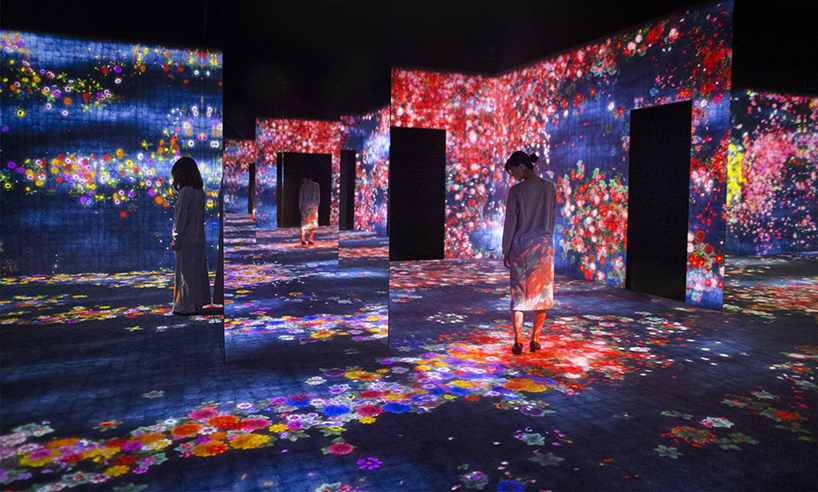Introduction
In the ever-evolving world of modern art, interactive art installations have carved a unique niche. Unlike traditional art forms that ask the audience to simply observe, these installations invite viewers to become part of the artwork itself. By blending technology, creativity, and public participation, interactive art installations offer a deeply immersive experience that redefines our relationship with art. In this article, we’ll explore what makes this form of expression so impactful, its global influence, and how it’s shaping the future of visual culture.
What Are Interactive Art Installations?
At their core, interactive art installations are creative works designed to engage the viewer in an active way. Whether it’s through touch, movement, sound, or digital interaction, these installations require audience participation to be fully realized. Unlike static paintings or sculptures, the art evolves and responds based on how people interact with it.
For example, an installation might use sensors to light up as people walk by or use augmented reality to bring static visuals to life. The beauty lies in the unpredictability—no two experiences are exactly the same.
The Rise of Interactive Art Installations in Modern Culture
Interactive art installations have gained massive popularity in recent years thanks to advancements in technology and the rise of social media. Today, people crave experiences that are not only visually engaging but also immersive and shareable.
Galleries and museums now seek out installations that encourage exploration and interactivity. From immersive rooms filled with digital projections to outdoor pieces that react to movement, interactive art installations are no longer confined to elite art circles—they’re part of pop culture.
Famous Art Installations
- Yayoi Kusama’s Infinity Mirror Rooms – These mirrored rooms create a kaleidoscopic world that changes as viewers move within them.
- teamLab Borderless (Tokyo, Japan) – A digital museum where walls and floors become canvases of ever-changing light and color.
- The Weather Project by Olafur Eliasson – A giant glowing sun installed in the Tate Modern that created a surreal, atmospheric experience.
Each of these installations encourages people to lose themselves in the artwork, shifting the role of the viewer to that of a co-creator.
Technology’s Role
Modern interactive art installations often rely on cutting-edge technology to create compelling experiences. Tools like:
- Motion sensors
- Virtual and augmented reality (VR/AR)
- Artificial intelligence
- LED lighting and sound mapping
…enable artists to craft environments that react in real-time. These technologies not only increase engagement but also expand the possibilities of artistic expression.
A great example is “Rain Room” by Random International—an installation where you can walk through falling water without getting wet, thanks to motion sensors that stop the rain where you stand.

How Interactive Art Installations Engage the Audience
What truly sets interactive art installations apart is their ability to involve the audience emotionally, mentally, and physically. Viewers are no longer passive observers—they are essential to the piece’s function.
By engaging multiple senses, these installations foster:
- Curiosity and exploration
- Emotional connection
- Personal interpretation
This shift makes art more democratic, accessible, and inclusive—everyone becomes a participant in the creative process.
The Impact of Interactive Art Installations on Communities
Beyond galleries, interactive art is making its way into public spaces. City parks, subway stations, and urban walls have all been transformed into interactive canvases that:
- Foster community engagement
- Beautify underused spaces
- Promote cultural awareness
For instance, interactive murals that change color with sunlight or sound-responsive street art bring creativity to unexpected places. These projects help communities connect and inspire civic pride.
Creating Your Own Interactive Art Installation
Here are a few basic steps:
- Define the Concept: What message or experience do you want to convey?
- Choose Your Medium: Will you use sound, movement, light, or digital interaction?
- Select a Space: Consider size, accessibility, and environmental factors.
- Use Technology Wisely: Integrate sensors or projections to make it interactive.
- Test with Audiences: Get feedback to ensure the interaction works smoothly.
Even simple DIY projects using LED lights or motion sensors can be highly impactful.
Future
The future of interactive art installations is bright and boundless. Emerging trends include:
- AI-generated art that evolves based on viewer feedback
- Blockchain-based installations offering NFT-linked experiences
- Immersive metaverse galleries where users explore digital spaces
As technology continues to advance, these installations will become more personalized, dynamic, and widespread.
Why Interactive Art Installations Matter
Interactive art installations matter because they bring art to life—literally. They:
- Foster a deeper connection between creator and viewer
- Encourage exploration, play, and creativity
- Make art more accessible to diverse audiences
- Transform passive spaces into meaningful experiences
In a fast-paced digital age, they offer moments of wonder and reflection—something we all need more of.
Art That Breaks Boundaries and Expectations
In many ways, this evolving form of art challenges our traditional expectations. Instead of admiring a piece from a distance, people are invited to step inside, touch, speak, or move to influence the outcome. This sense of unpredictability brings a sense of excitement and spontaneity that resonates with today’s experience-driven culture. It also encourages viewers to be present, mindful, and engaged—offering a rare opportunity for connection in an increasingly digital world.
Conclusion
Interactive art installations are not just a passing trend—they are the future of how we experience and understand art. By breaking traditional boundaries and engaging the senses, they offer a more profound connection between people, creativity, and environment. Whether you’re an artist, enthusiast, or simply curious, exploring this world will open your eyes to endless possibilities.
If u want to explore more must visit this site :https://sourcemaui.com/
